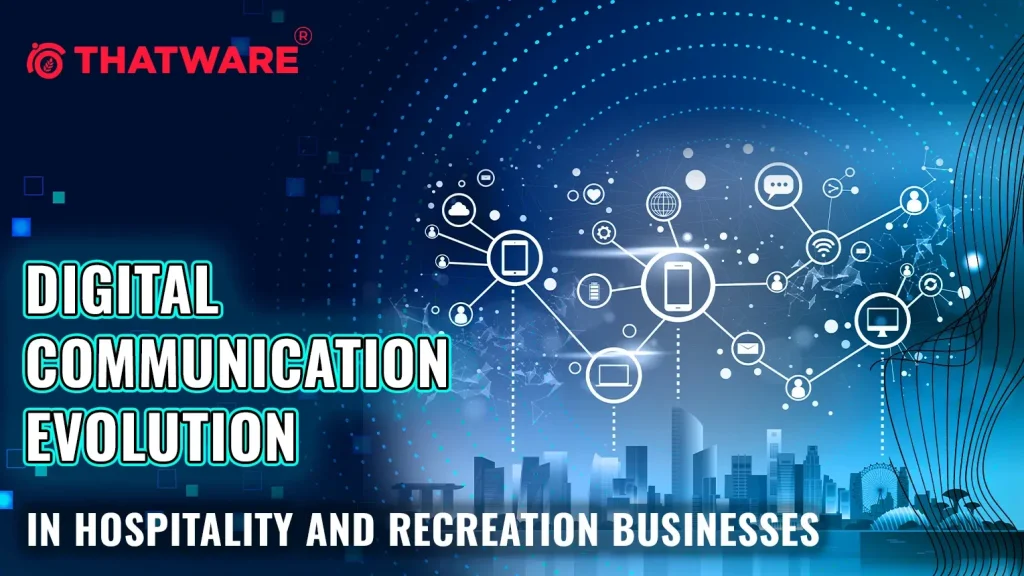Picture this: Guests arrive at sunset, searching for check-in information. Outdated paper signs offer conflicting details. Staff scrambles to answer repeated questions.
This scenario costs businesses thousands annually. Businesses are increasingly turning to RV digital signage solutions to modernize communication, improve guest satisfaction, and reduce operational strain. Modern digital displays revolutionize guest communications completely.
Before exploring solutions, consider these critical pain points. Information gaps frustrate guests daily. Staff waste precious hours updating notices.

Key Challenges Hospitality Businesses Face Today
Lost revenue stems from poor communication. Missed upselling opportunities accumulate quickly. Emergency notifications take dangerously long.
Maintenance costs drain operational budgets. Printing expenses never stop. Sign replacements become endless cycles.
Weather destroys traditional signage regularly. Rain ruins paper notices. Sun fades important information.
Guest expectations exceed current capabilities. According to the Digital Signage Federation’s 2024 industry report, 67% of hospitality businesses report guest demands for real-time digital information. Static signs disappoint consistently.
Understanding Display Technology Implementation
Hospitality facilities need strategic planning. Paper notices fail modern expectations. Digital information boards offer better solutions.
Power infrastructure poses the first challenge. Many properties lack adequate circuits. Older facilities need electrical upgrades.
Environmental factors affect equipment choices. Extreme temperatures destroy consumer-grade electronics. Outdoor conditions corrode unprotected systems.
Budget reality shapes deployment pace. Starting small proves smarter. Each success builds confidence.
For example, a phased implementation approach can significantly reduce initial costs. Starting with one display allows operators to learn the system. Once comfortable, they can expand to multiple screens across the property.
Technical Specifications That Matter
Screen systems require careful selection. Wrong choices waste money. Understanding specifications prevents mistakes.
Brightness determines outdoor visibility effectively. Below 2,500 nits works indoors only. Direct sunlight demands 5,000+ nits.
Resolution affects viewing distance significantly. Standard 1080p handles most needs. 4K rarely justifies extra expense.
Refresh rates impact viewer comfort. 60Hz minimum prevents headaches. Higher rates offer minimal benefits.
Installation technicians report sizing errors frequently. Too small frustrates viewers. Oversized displays drain budgets unnecessarily.
Power Infrastructure Considerations
Electrical capacity limits deployment options. Property managers discover this quickly. Planning prevents expensive surprises.
Load calculations guide circuit planning. Each display needs 100-500 watts. Multiple screens multiply requirements.
Backup systems ensure reliability. UPS units maintain emergency communications. Generators extend runtime during outages.
Solar options reduce operating costs. Panels generate daytime power. Batteries store energy overnight.
AVIXA’s 2024 technology adoption survey shows that hospitality infrastructure investments have become mandatory for competitive positioning. Smart planning maximizes returns.
Content Strategy Development
Digital signage solutions need fresh content. Static messages lose impact. Dynamic updates maintain engagement.
Cloud platforms enable remote management. Updates happen from anywhere. Multiple locations synchronize automatically. Modern solutions like Rise Vision demonstrate how cloud-based systems should work: enabling instant updates across multiple properties from any device with internet access.
Scheduling features automate daily operations. Business hours display precisely. Promotional content appears perfectly timed.
Template libraries accelerate content creation. Professional designs require no expertise. Brand consistency improves immediately. Extensive collections of free, customizable templates make content creation accessible to any business owner, regardless of design experience.
Many businesses report that automated content management significantly reduces staff workload. Remote updating capabilities allow managers to make changes from anywhere. Customer satisfaction often improves with more timely and relevant information.
Weather Resistance Requirements
Outdoor hospitality businesses battle nature constantly. Equipment must survive everything. Durability determines ROI.
Protection ratings indicate survivability levels. IP65 handles rain and dust. IP67 survives temporary submersion.
Temperature ranges vary widely. Consumer products fail outdoors. Industrial ratings ensure longevity.
Anti-vandal features protect investments. Tempered glass resists impacts. Locked enclosures prevent tampering.
Digital display manufacturers test extensively. Warranties depend on proper selection. Choose wisely initially.
Integration Challenges and Solutions
Legacy systems complicate modernization efforts. Data silos prevent efficiency. Integration strategies matter significantly.
Open platforms facilitate seamless connections. APIs enable data sharing. Proprietary systems create obstacles.
Middleware bridges incompatible system gaps. Translation happens automatically. Different platforms communicate seamlessly.
Phased integration minimizes operational disruption. Critical features connect first. Secondary systems follow later.
Hospitality management companies report similar experiences. Centralized control proves essential. Planning prevents integration failures.
Staff Training Requirements
Technology requires human adaptation. Resistance stems from uncertainty. Training builds confidence effectively.
Intuitive interfaces reduce confusion. Good design minimizes errors. Staff adoption accelerates naturally.
Multiple training formats help. Videos complement written guides. Different learning styles need accommodation.
Business operators budget training explicitly. Education costs prove worthwhile. User competence determines success.
Measuring Communication Effectiveness
Metrics justify technology investments. Data guides improvements. Measurement prevents costly assumptions.
Analytics reveal engagement patterns clearly. Dwell time shows interest levels. Skip rates identify poor content.
Peak viewing times optimize scheduling. Morning rushes need different content. Evening messages target relaxation.
Revenue tracking proves ROI definitively. Promotional effectiveness becomes measurable. Numbers justify expansion plans.
Surveys provide qualitative insights. Guest feedback drives refinements. Satisfaction correlates with information quality.
Regulatory Compliance Considerations
Legal requirements affect installations significantly. Ignorance causes expensive problems. Understanding regulations saves headaches.
Local ordinances restrict operations. Brightness limits protect neighborhoods. Automatic dimming ensures compliance.
Highway regulations limit animations. Driver safety takes priority. Static content remains acceptable.
ADA standards mandate accessibility. Installation height matters. Alternative formats assist everyone.
Signage vendors overlook regulations often. Research prevents violations. Compliance beats penalties always.
Selecting the Right Platform
Technology choices require systematic evaluation. Features tell partial stories. Support quality determines satisfaction.
Key evaluation criteria include:
- Scalability potential: Future growth needs consideration. Systems must expand easily from single displays to hundreds of screens across multiple properties.
- Reliability metrics: Uptime guarantees matter significantly. Downtime costs accumulate quickly.
- Total ownership costs: Exceed purchase price. Maintenance adds expenses. Energy consumption affects budgets.
Industry professionals recommend trials. Testing reveals hidden limitations. Reference checks validate claims.
Environmental Impact Considerations
Sustainability influences decisions increasingly. Electronic displays consume resources. Responsible choices matter more.
Energy efficiency reduces consumption dramatically. According to AVIXA’s Digital Signage Energy Efficiency Study, LED displays consume 30-50% less energy compared to traditional display technologies. Smart controls optimize further.
Durability reduces waste generation significantly. Quality products last longer. Replacement frequency drops substantially.
Recycling programs handle disposal responsibly. Vendor take-back services help. Environmental responsibility grows important.
Digital systems eliminate paper waste. Electronic boards stop printing needs. Net impact improves substantially.
Emerging Technology Trends
Innovation reshapes possibilities constantly. New developments promise improvements. Awareness enables planning.
AI personalizes content delivery. Guest preferences trigger messages. Engagement rates improve dramatically.
IoT integration expands capabilities. Sensors trigger contextual updates. Real-time conditions drive content.
Advanced analytics provide insights. Predictive models optimize timing. Machine learning improves continuously.
According to Statista’s Digital Signage Market Analysis, content management platforms evolve rapidly. Today’s limitations disappear tomorrow. Flexibility ensures relevance.
Common Implementation Pitfalls
Industry mistakes teach valuable lessons. Awareness prevents repeated errors. Knowledge saves resources.
- Insufficient content planning causes failures. Empty screens frustrate viewers. Content calendars prevent gaps.
- Neglecting maintenance schedules degrades performance. Dust accumulation reduces visibility. Regular cleaning maintains quality.
- Underestimating training needs creates problems. Confused staff abandon systems. Proper education ensures adoption.
Rushing deployment often causes problems that require months to resolve. Taking time for proper planning and testing prevents many issues from developing.
Building Successful Deployment Strategies
Effective implementations share common characteristics. Success patterns emerge clearly. Best practices guide decisions.
- Start with focused pilot programs: Test thoroughly before scaling. Learn from initial experiences.
- Gather comprehensive stakeholder input continuously. Staff insights prove valuable. Guest feedback drives improvements.
- Scale gradually with measured steps. Each phase builds on success. Rapid expansion causes problems.
Visual communication tools transform experiences. Quality determines success levels. Planning produces superior results.
Making Informed Technology Decisions
The hospitality industry evolves rapidly. Guest expectations drive advancement. Digital solutions multiply options continuously.
Businesses need comprehensive evaluation strategies. Compare features, support, and scalability equally. Consider total ownership costs.
Industry resources provide valuable guidance. The Digital Signage Federation offers implementation guides. Peer networks share experiences.
The Small Business Administration emphasizes technology planning importance. Strategic approaches ensure success. Research pays dividends consistently.
Practical Next Steps
Business owners planning digital signage adoption should start strategically. Evaluate multiple platforms thoroughly. Keep content fresh consistently.
Before implementation:
- Assess current infrastructure capabilities first
- Survey guest communication preferences
- Calculate potential ROI accurately
During evaluation:
- Request vendor demonstrations
- Compare proposals carefully
- Start small, scale smart
The payoff includes better guest experiences. Operations run smoother. Digital transformation becomes inevitable.
Modern digital displays represent the future of business communication. Traditional methods fade quickly. The transition rewards prepared operators generously.


